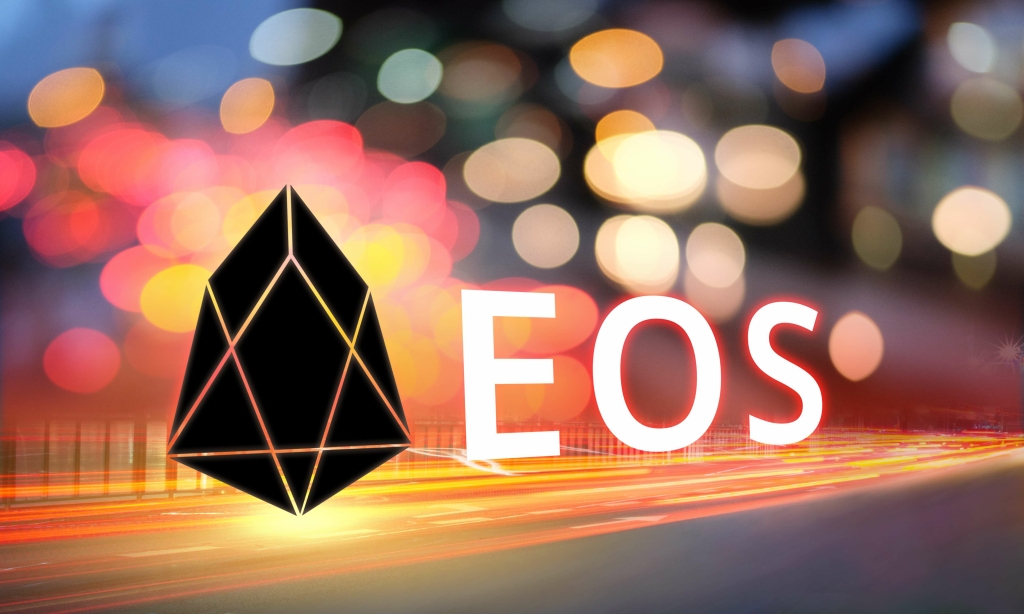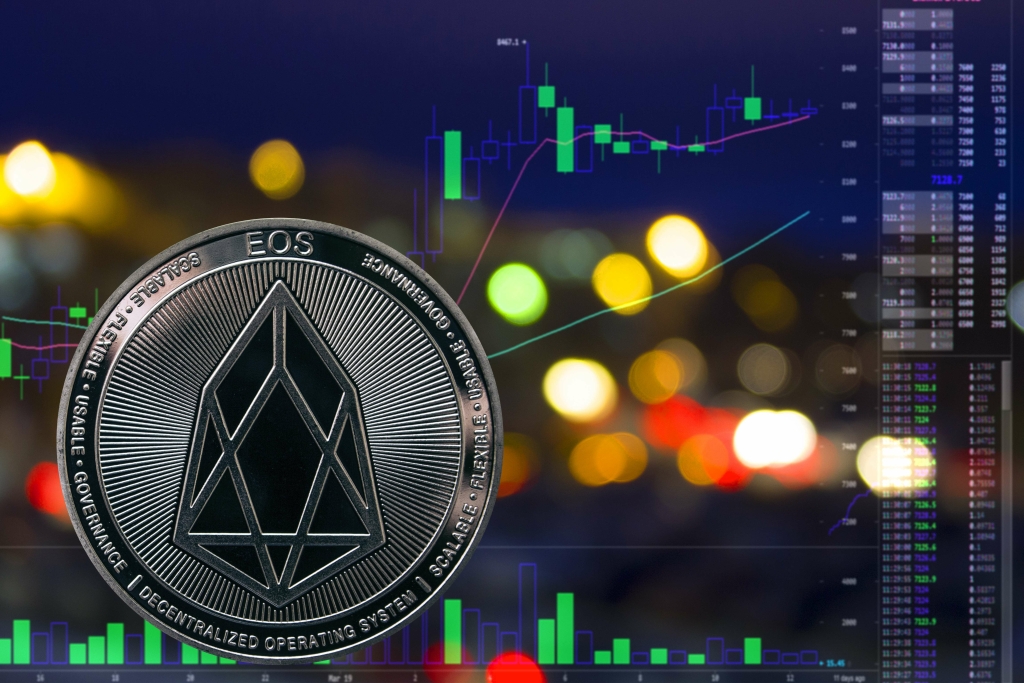A Guide to EOS

EOSIO or simply EOS is a small contract decentralized blockchain system that saw the world as ICO in 2017. The tokens released by the blockchain are called EOS tokens. When the platform was finally launched, it became rather popular. Some experts even assumed that EOS will become an Ethereum killer.
The release of the platform in 2018 has been accepted fairly positively by the audience. The company that developed EOS, Block.one, has received $4.1 billion for selling the coin.
EOS is supposed to help businesses to develop decentralized apps within a blockchain. Any developer theoretically can develop the app within the network, and the system will host and run it. To use the platform, for example, buy services, you need to have EOS coins.
The applications developed on the blockchain are called dApps (decentralized apps). These business applications are based on EOS blockchain rather than on a single server or computer. EOS network enables a safe connection between dApps and the Internet.
How does EOS Work?
EOSIO is a network that was created in a way that its work resembles the performance of a traditional computer. The software used to support EOS is similar to some of the traditional computing protocols.
Three main components help run the EOSIO blockchain:
- Bandwidth. This component is utilized to receive and pass on the information within the blockchain.
- Computation or CPU (Central processing unit). The needed processing power is utilized to run a separate dApp.
- State Storage (RAM). A component that safely hosts data. It can offer access to data per request.
The native cryptocurrency, EOS, is needed to get access to all of the mentioned components. Getting access to these components means being able to develop decentralized apps. To create, launch and run dApps, developers need to buy or mine EOS.
Another notable thing about dApps on EOSIO is that when users conduct transactions, they don’t need to pay for them. EOSIO dApps are free to transfer, but it doesn’t mean that transaction fees don’t exist. Transactions fees are on developers, they pay for users’ transfers in EOS.
Proof of Stake Algorithm
Unlike such platforms as Bitcoin, Ethereum, and other blockchains, EOSIO operates thanks to a delegated proof of stake algorithm. It is a bit different from its predecessor proof of stake. The proof of stake concept is based on a consensus mechanism that is used to validate transactions.
Nodes with bigger crypto holdings are prioritized when deciding which node is going to be used as a validator for a transaction. As a result, users of the blockchain are more interested in holding crypto rather than simply trading it.
But the delegated proof of stake is using the real-time voting and reputation mechanism to choose a validator. The main difference between PoS and DPoS is this voting system that makes the mining process more fair and democratic.
But still, the more EOS you own, the better chances you get of being chosen to add the block to a system and get a reward in native tokens to the EOSIO system.

Why is EOS so Unique?
Even though EOS didn’t kill Ethereum as it is seen at the moment of writing the article, it has several interesting features that make the platform and its cryptocurrency unique:
- Flexibility and security. EOS has learned from an attack on DAO when a hacker spotted a flaw and managed to steal around 3.5 million in ETH. EOS blocks the node with a suspicious transaction and starts processing new transactions only after the issue is fixed.
- Better decentralization. If you compare Ethereum to EOS, the first one operates as a decentralized computer used for various purposes. But EOS is more like a decentralized operating system.
- Scalability. Decentralization offered a way to process transactions without a central authority. But it resulted in reduced scalability. EOS offered a solution by utilizing delegated proof of stake algorithm.
EOSIO claims they can process around 1 million financial transactions per second. To be able to host such a huge number of transactions, EOSIO uses a method called parallel processing.
Use Cases of EOS
As with many other cryptocurrencies, EOS has different use cases. You can mine or buy EOS, exchange it for a different cryptocurrency, or even exchange it for fiat money.
You can create a stake from your EOS holdings and earn rewards for validating nodes within the blockchain. You also need EOS coins to develop and run dApps. But there is much more to add about EOS, especially in comparison to Ethereum.
If you take a look at Ethereum, you need native tokens called Ether or ETH to use the platform. You also need ETH to pay for fees. A transaction fee within the Ethereum blockchain is called GAS.
These fees are increasing the more people use the network. It isn’t beneficial in the long term. This idea is based on the method used to build the Ethereum network. To get access to the network, users of the blockchain have to rent Ethereum’s Virtual Machine, and this requires paying a fee.
EOS is built differently and it allows users to utilize it for free transactions — and that’s the main use case of EOSIO. Instead of paying transaction fees, users can freely exchange with each other without the need to pay huge fees. Developers who create and launch dApps are the ones who pay fees.
Another use case of EOS is investing. Check what are the risks of investing in EOS and whether it’s a good idea.
What are the Risks of Investing in EOS?
EOS seems like a good cryptocurrency to invest in thanks to the EOSIO platform’s potential. As it was mentioned, the platform is unique and offers solutions to existing platforms. Meaning, EOS might increase in demand and skyrocket in price. But will it happen?
EOSIO platform’s official launch happened back in 2018. But it’s barely possible to say that EOS has become the Ethereum killer like a lot of experts predicted it to be. Ethereum is still one of the biggest platforms that is a go-to when developing apps.
So, is EOS a good cryptocurrency to invest in? You need to consider the main risk of investing in EOS — creating a stake. Proof of stake involves users creating stakes of their crypto so that they become nodes in the system to support it. But during the period of holding a stake, you can’t sell the coin.
Meaning, if you create a stake in your EOS coins, and it will start dropping in price, you won’t even be able to react and sell your crypto tokens. That’s something that has already happened in the past when the coin increased in price to $20 and then started dropping.
If you decide to invest in EOS, consider this fact. Any investment is a risk, especially when investing in cryptocurrency.
